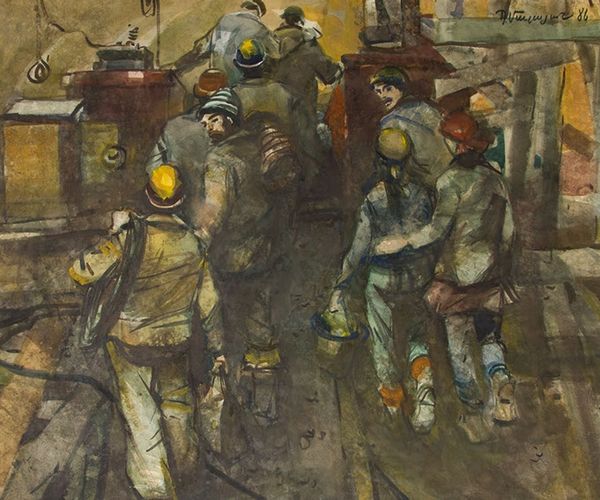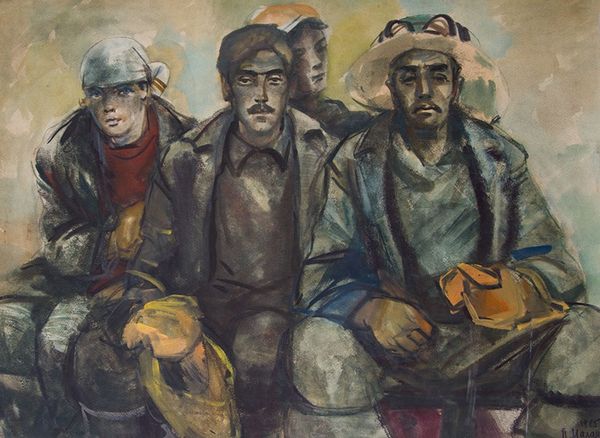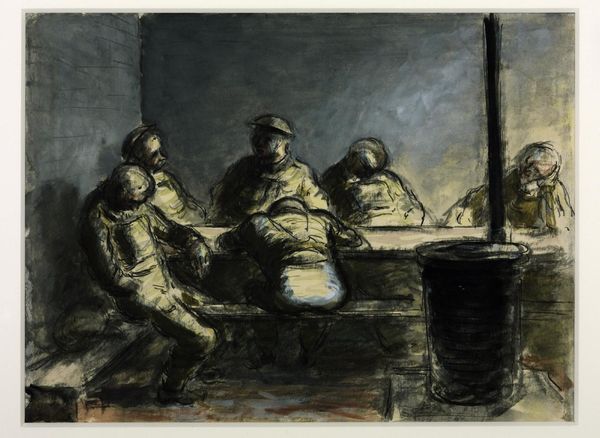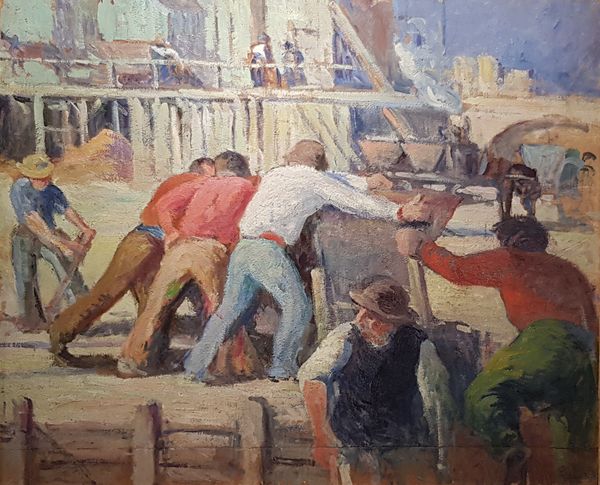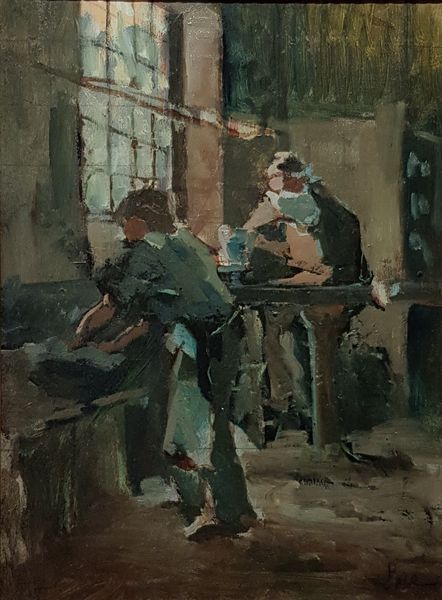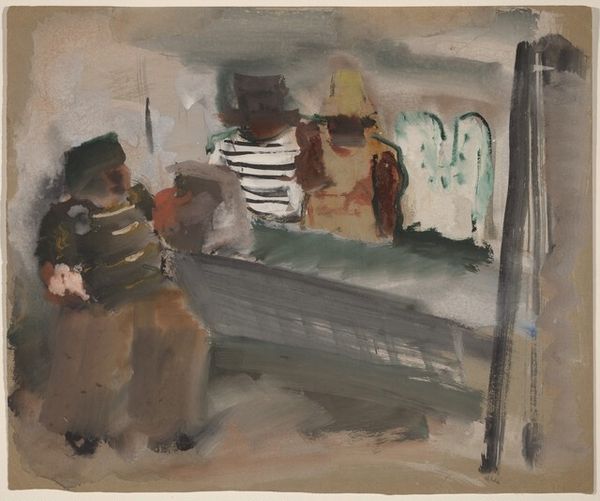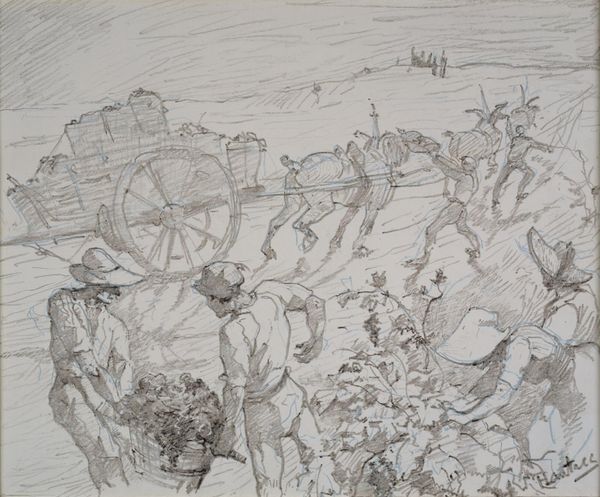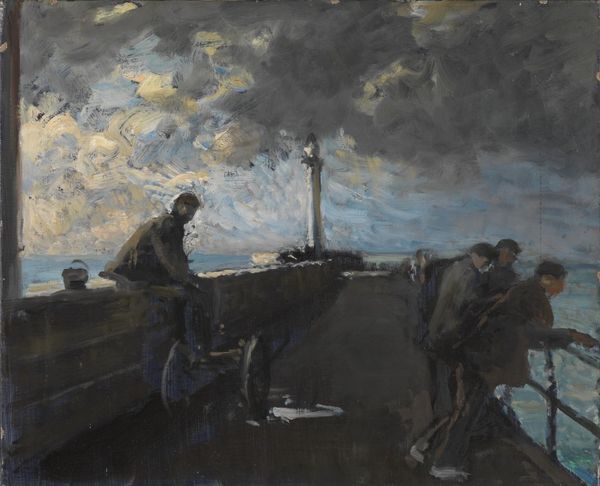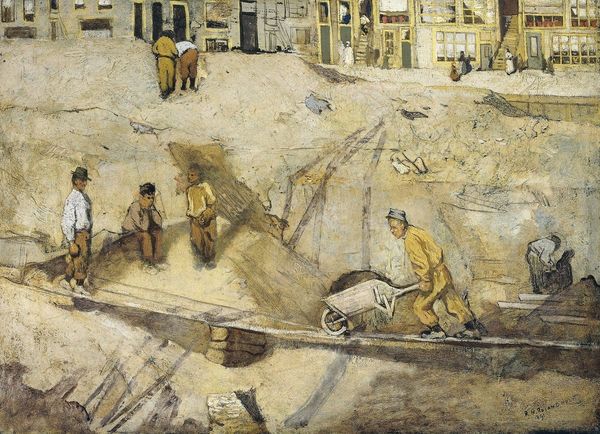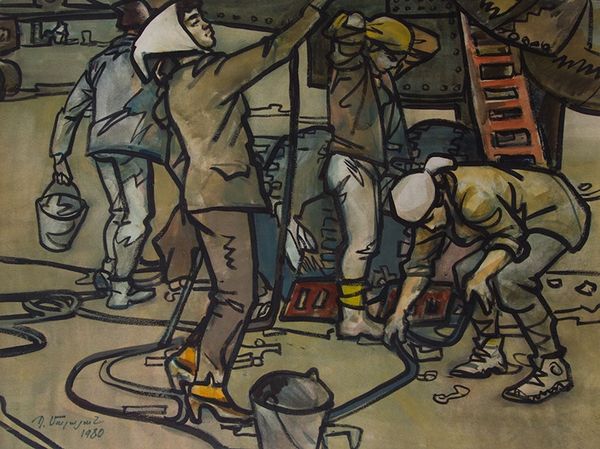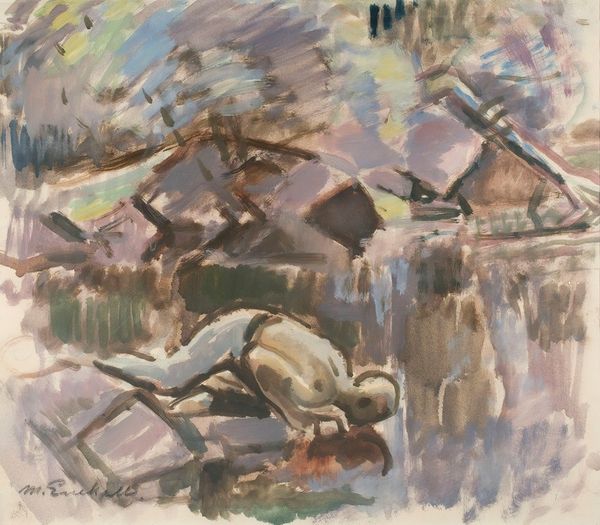
watercolor
#
figuration
#
watercolor
#
cityscape
#
genre-painting
#
modernism
#
realism
Copyright: Petros Malayan,Fair Use
Curator: Petros Malayan’s watercolor work, titled "End of the Shift", completed in 1986, presents us with a moment frozen in time. My first impression is how melancholic the atmosphere appears. Editor: Indeed, a profound quietness permeates this scene. Note the artist's use of muted tones and fluid brushstrokes. See how this technique creates a sense of motion, especially in rendering the figures climbing those steep stairs, presumably leaving the work site? Curator: Malayan created the artwork in 1986, which places this piece at the tail end of the Soviet era. We see this moment reflected in his attention to depicting the everyday life and labor in the city, common people represented with dignity. It speaks to a socialist realist tradition but with a distinctive artistic perspective. Editor: And that is evident through the composition, which rejects heroic idealizations, presenting a slice of mundane, honest work. See the strong diagonal lines formed by the stairway, how they guide your eye through the composition and also give a dynamic impression. Observe the negative space occupied by the skyline. What symbolic function might the skyline possess within the artwork? Curator: Considering its date, it acts as an observation on urban transformation of that time. While also emphasizing the role and impact of workers’ role in that era's socio-economic shift. The painting may invite us to consider questions related to labor rights. The men depicted aren't individualized; instead, they stand as symbolic representation of all the workers, maybe suggesting their experiences during those transformative periods. Editor: Exactly, though in its rendering the absence of precise detail could suggest something else. Rather than fixate on a didactic reading of the labor environment and policy implications, let’s consider how Malayan's formalism renders these workers almost spectral, their solidity challenged by the watercolor medium. It lends a timeless universality to them. Curator: I think what we’re seeing is Malayan subtly using his composition and the watercolours to humanize these ordinary laborers. It allows for both a historical understanding of that moment and deeper appreciation for the working population and a sensitive portrayal. Editor: "End of the Shift" uses very evocative form and composition that create narrative depth that resonates far beyond the apparent subject. Curator: It’s a subtle masterpiece when seen from this vantage point—art transcending its social context and historical moment.
Comments
No comments
Be the first to comment and join the conversation on the ultimate creative platform.
